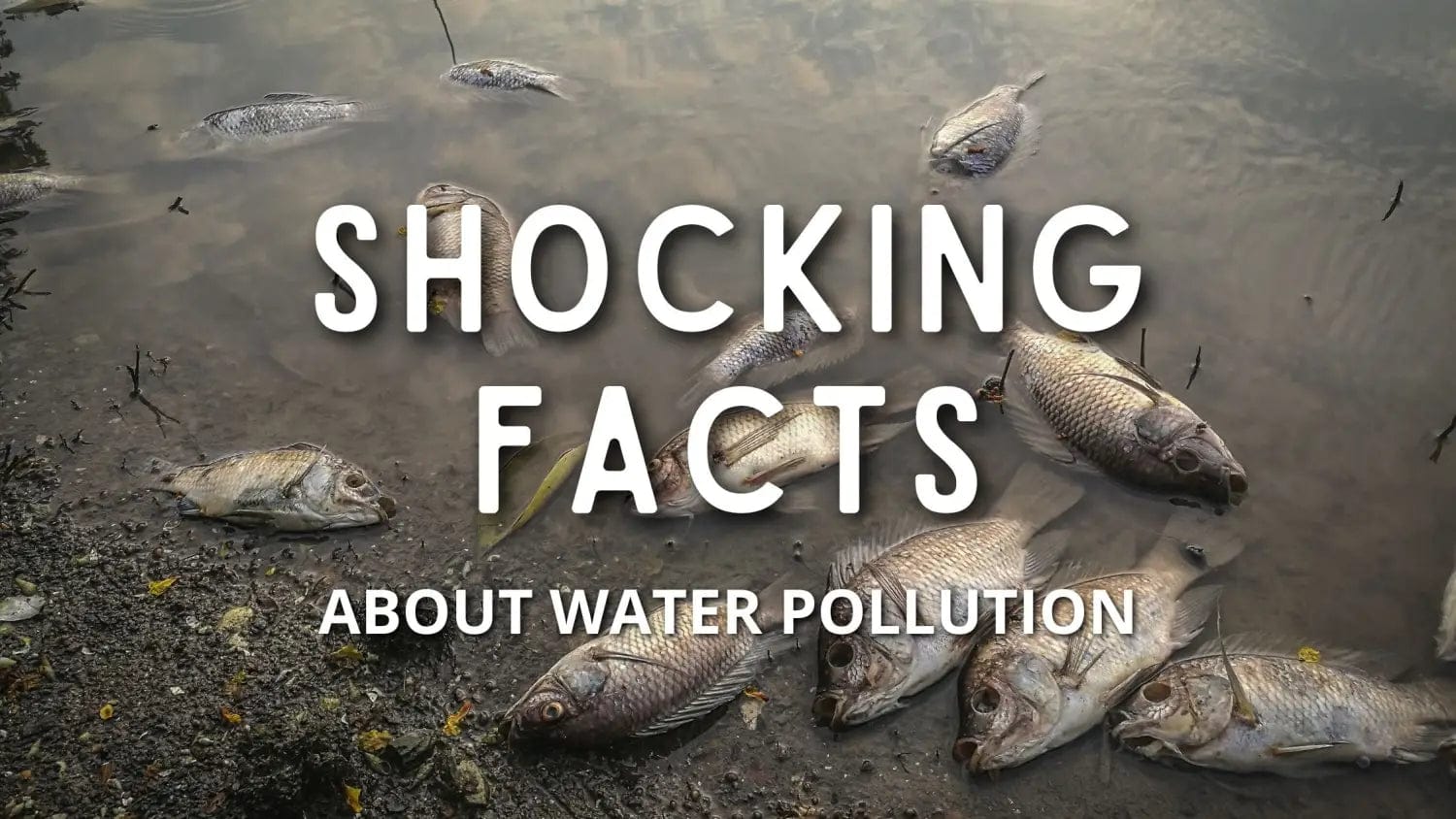Freshwater is a main natural resource that is used for a wide variety of activities in our daily life i.e. drinking as well as for various developmental purposes. The increase in pollution levels leads to instability in our natural environment and damages both the physical systems and living organisms living in the ecosystem. Various harmful substances present in polluted water bodies in the form of pesticides, insecticides, heavy metals, mill wastes and crude oil are often released into the aquatic ecosystem. When a large amount of these pollutants are released into any water body, it causes acute effects characterized by rapid high-scale mortality of aquatic organisms. Minor levels of pollutant discharge result in the accumulation of contaminants in the body structure of fish species. Water pollution effects are classified into acute and chronic effects, which suppress immune-response, decrease in metabolism, damage to gills and epithelial layer in fish species. Some of the diseases caused by pollutants include fin rot, tail rot, gill disease, damage to hepatic tissues, and also cause ulcers. The purpose of this chapter is to review the different types of impacts caused by water pollution on the health of fish species and the health of their ecosystem.
Introduction
Water pollution occurs when certain unwanted components enter water bodies and alter the water quality (Alremman et al., 2016), and become harmful to human health and their environment (Briggs, 2003). Water plays a vital role in recycling nutrients and is an essential natural source used for drinking and other developmental purposes. Aquatic systems are commonly used to dispose and recycle sewage and contaminated wastes and to flush away the excess to the ocean. The increase in pollutant levels and in turn overutilization of water resources for various developmental activities i.e. agriculture, construction activities, industrial processes, and also thermal power plants to cope with the requirements of the large population, reduces their assimilable quantities. Thus, the dual pressure mounted on water bodies is ultimately faced by the biological communities inhabiting them.
Generally, fish species are one of the most important aquatic communities related to humans. Pollution generally refers to any undesirable change in the natural quality of any ecosystem brought about by changes in their physical, chemical, as well as biological factors (Subhendu, 2000). Aquatic ecosystems are fragile and at high risk due to the majority of pollutants derived mostly from domestic, urban and industrial sources i.e. various agricultural practices (Figure 1) result in the release of pollutants into the river system (Kaur and Dua, 2014; Pinto et al., 2015; Byrne et al., 2015). Mainly in the aquatic ecosystem, the most persistent contaminants are in the forms of heavy metals and pesticides (Khosnood, 2016). Heavy metals are one of the major pollutants, which are quickly accumulated in the body and are slowly digested and excreted from aquatic animals. Pesticides mainly used in agricultural activities are directly released into the open environment by drift spray, evaporation and wind erosion of soil (Qiuetal., 2004). These pesticides present in the aquatic ecosystem can affect the life cycle of aquatic organisms (Ventura et al., 2008).
As a result of the increase in population rate leading to development and urbanization, water pollution by domestic activities, agricultural processes, municipal and industrial processes has become a significant concern for the well-being of humanity. Water-soluble pollutants released from various industries and municipal activities, directly into the soil and in turn, the atmosphere have been quickly transported to natural water bodies. Some of the toxins decay or volatilize to form insoluble salts and rest and get combined into the substrate in the bed surface. Fish species are the perfect model to realize the occurrence of genotoxic toxins in aquatic ecosystems (Aich et al., 2015; Walia et al., 2015; Sharma et al., 2018) as these aquatic organisms are very sensitive to low quantities of metals within the water body, and also live in some isolated habitats. Aquatic organisms such as fish species take up these toxins directly, followed by metabolism of these toxins, resulting in more toxic products. For example, mercury can be converted to very highly toxic methyl-mercury by microbial action which in turn is taken up by fish species (Bukola et al., 2015). Fish fry, larvae, yearlings, and fingerlings are among the most susceptible life stages that are as harshly affected as non-target aquatic organisms by exposure to pesticides and heavy metal pollution. Alterations of vital organs i.e. gills, kidneys, and liver can disturb physiology, survival rates, osmoregulation, buoyancy, reproductive processes, etc., and in turn lead to failures in stock conservation and population changes (Khosnood, 2017).
Some aquatic animals have been identified to concentrate toxic solutes from their habitat without any apparent harm and thus act as pollutant amplifiers, making the introduced toxins present to predators at dangerously high levels. Some cases have been reported explaining the adverse effects of environmental pollutants on the health of fish and also fish consumers. Due to increased anthropogenic activities, a high load on aquatic ecosystem dictates the need for researches to investigate the adverse effects of water pollution and its potential risk to aquatic organisms and their ecosystem. The deleterious effects of various types of water pollution on aquatic communities living in water bodies are the focus of many scientific researches. Decreasing fish population and partial loss of commercial fishing predict drastic changes in aquatic ecosystem (Hinton and Laursen, 1990).
Fish communities are one of the most valuable resources of high trace proteins for humans. Modifications in morphology, tissue and biochemical composition by aquatic organism expose them to various types of stress and changes in the habitat ecosystem. If certain fish species are exposed to chemical contaminants, the contaminants act rapidly and induce a series of modifications in various body parts and organs, mostly gills, kidney and liver (Bukola et al., 2015). Thus, a diverse range of histo-cytological changes in fish species have been developed and supported as biomarkers for the purpose of monitoring water pollution levels. Several factors such as increasing population, industrialization, urbanization, forest loss, lack of environmental awareness among the society, lack of policy implementation, lack of rules and regulations, waste discharge from various industries, etc. leads to pollution in the aquatic ecosystem and ultimate loss of aquatic organisms.
Pollutants released from various types of industrial discharges and sewage not only pollute the surface water of rivers and reservoirs but also infiltrate into the ground and pollute groundwater resources. Aquatic ecosystems are exposed to pollution loads, which are associated with increased urbanization and population growth (Edokpaye and Nkwoji, 2000; Nkwoji et al., 2010). These pollutants cause major threats to aquatic ecosystems, altering hydrological, physicochemical and faunal characteristics (nkwoji et al., 2010). Nowadays, the most dangerous difficulties of developing countries are the inappropriate management of huge amounts of wastes produced by several anthropogenic activities. Among them, the most challenging factor is the unsafe disposal of these wastes in the open ambient environment. Water bodies are most affected by these activities especially, freshwater bodies such as rivers and reservoirs and render this type of natural resources unfit for both primary and secondary use. Thus, the objective of this review paper is mainly concerned with the impact assessment of water pollution on fish health and their habitat.
Sources of Water Pollutants
Mainly water pollution emanates from two broad sources i.e. point sources and non-point sources. Point sources are the identified type of pollutant sources where all the pollutant material enters the water bodies from a single identifiable source i.e. final waste discharge point of various industrial organization wherein in non-point sources, the pollutant substances come into contact water bodies in multiple and there are no easily identifiable sources. Almost all hominid actions have the potential to affect the surface and groundwater quality of any water bodies directly or indirectly. Fertilizers used by agriculturalists in agricultural activities are continuously eroded by rain into the surface and thus pollute the water body.
Human and developmental activities e.g. Waste from industries, irrigation activities, waste management problems, and increased urbanization were some of the serious threats to freshwater ecosystems (Zhu et al., 2018; Meijide et al., 2018; Kamboj et al., 2020). Climate variation has an impact on both biotic and abiotic features i.e. water as well as air temperature and rainfall levels affect the regular function of any aquatic ecosystems, including the feeding and breeding of aquatic organisms.
Moreover, these contamination levels affect the habitats of aquatic flora and fauna (Schmeler et al., 2018). Therefore, for conservation purposes, it is important to protect freshwater aquatic species around the world and also safeguard the regular functions of ecosystems. Thus, it is very important to identify and classify the major pollution activities, sources, and fates in aquatic ecosystems, including their temporal and spatial distribution (Liu et al., 2018; Zhao et al., 2018). Considering the impact of natural processes can support developing conservation curriculum and policies to avoid disturbance of freshwater ecosystems (Schmeler et al., 2018). The category of major water pollutants with sources and examples is given in the flowchart.
Read Also:
- Water Pollution: Causes, Negative Effects And Prevention Methods
- Prevention Of Water Pollution
- Effects And Control Ways of Water Pollution
- Causes Of Water Pollution
- Introduction To Water Pollution
- Introduction To Air Quality And Pollution Control
- Introduction And History Of Anthropogenic Pollution
- What Is Air Pollution
- Prevention Of Plastic Pollution
- Health Effects Of Plastic Pollution







